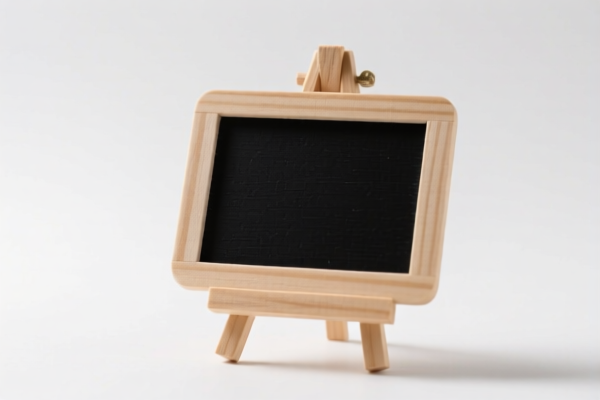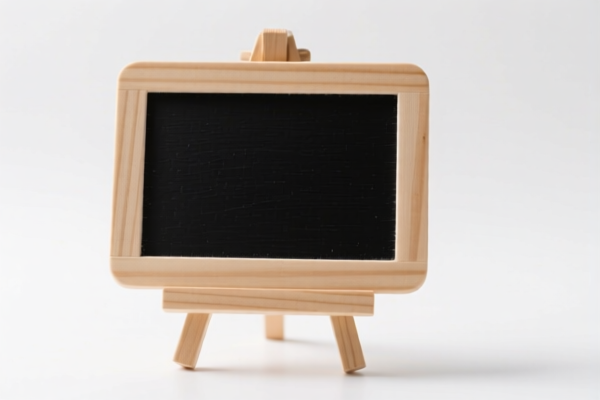| HS Code | Official Doc | Tariff Rate | Origin | Destination | Effective Date |
|---|---|---|---|---|---|
| 4823901000 | Doc | 55.0% | CN | US | 2025-05-12 |
| 4823902000 | Doc | 55.0% | CN | US | 2025-05-12 |
| 4820900000 | Doc | 55.0% | CN | US | 2025-05-12 |
| 9610000000 | Doc | 33.5% | CN | US | 2025-05-12 |




Blackboard
A blackboard is a reusable writing surface used for instructional practice in classrooms, offices, and other learning environments. Historically, traditional blackboards were made of slate, but modern blackboards are typically constructed from porcelain-coated steel or composite materials.
Material:
- Slate: Older blackboards were crafted from natural slate stone. These offered a dark, textured surface ideal for chalk adhesion.
- Porcelain-coated Steel: The most common material today, offering a smooth, durable, and easily cleanable surface. Often magnetic.
- Composite Materials: Variations exist using engineered materials for specific properties like weight or flexibility.
- Chalkboards: Specifically use porous surfaces designed for traditional chalk.
- Whiteboards: While often considered distinct, are a related technology using a non-porous surface for use with dry-erase markers.
Purpose:
The primary purpose of a blackboard is to provide a temporary, erasable space for writing, drawing, and displaying information. They are used for:
- Instruction: Teachers utilize blackboards to present lessons, solve problems, and illustrate concepts.
- Note-taking: Students may copy information from the blackboard.
- Brainstorming: Facilitating group discussions and idea generation.
- Visual Communication: Displaying diagrams, charts, and other visual aids.
Function:
Blackboards function through the friction between a writing tool (typically chalk) and the surface, leaving a visible mark. The surface texture allows the chalk particles to adhere. Erasing removes the chalk particles, restoring a clean surface. Magnetic properties, when present, allow for the attachment of notes, images, and other materials.
Usage Scenarios:
- Classrooms: Primary environment for educational purposes, from elementary schools to universities.
- Offices: Meeting rooms for presentations, brainstorming sessions, and project planning.
- Training Centers: Workshops, seminars, and professional development.
- Home: Educational use, message boards, or artistic expression.
- Public Spaces: Restaurants (menus), pubs (daily specials), and other businesses.
Common Types:
- Traditional Chalkboards: Dark, slate or porcelain-coated steel, used with chalk.
- Whiteboards: Smooth, non-porous surface, used with dry-erase markers. Often magnetic.
- Interactive Whiteboards (Smartboards): Connect to computers and projectors, allowing for digital interaction and annotation.
- Portable Blackboards/Whiteboards: Smaller, often wheeled, for flexible use in different locations.
- Magnetic Blackboards/Whiteboards: Incorporate magnetic properties for attaching materials.
- Glass Blackboards: Increasingly popular, offering a sleek aesthetic and durability.
Blackboards are writing surfaces, potentially framed or unframed. Based on the provided information, the relevant HS code is:
- 9610000000: Slates and boards, with writing or drawing surfaces, whether or not framed.
- Chapter 96: Miscellaneous manufactured articles. This chapter covers a variety of articles not specifically covered elsewhere.
- Heading 9610: Slates and boards, with writing or drawing surfaces. This heading specifically includes items designed for writing or drawing.
- Subheading 9610000000: This is a further specification within the heading, indicating all slates and boards with writing or drawing surfaces, regardless of framing.
Regarding HS code 9610000000, the basic tariff is 3.5%, with no additional surcharge currently applied, but a 30% additional tariff will be implemented after April 2, 2025. The total tariff rate is currently 33.5%.
Customer Reviews
No reviews yet.